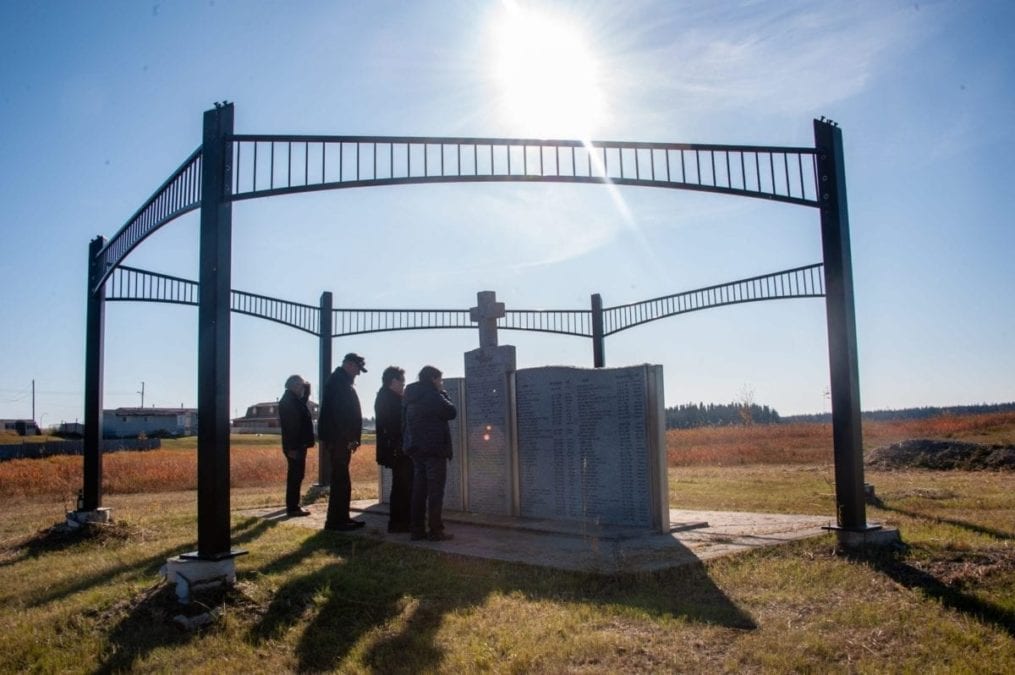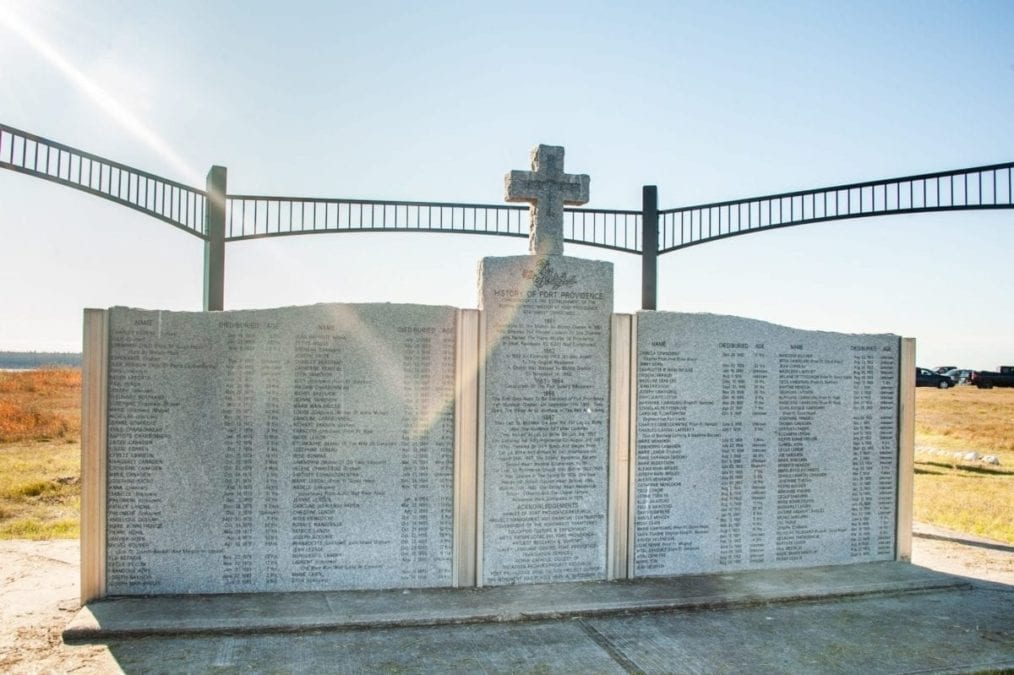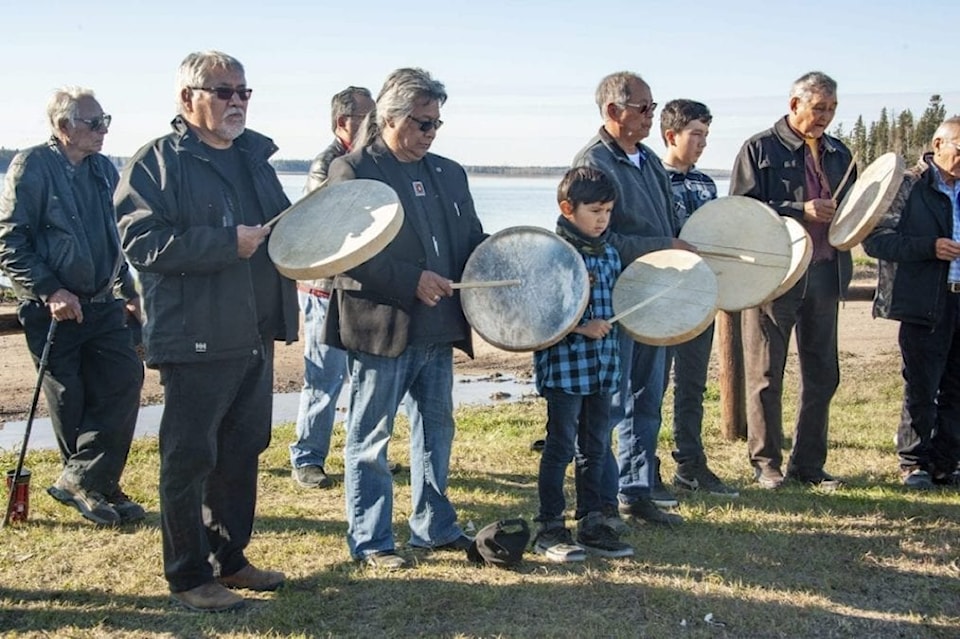Helen. Charles. Georgina.
For decades, their names went unspoken. Their burial site remained unvisited. Their stories were left untold.
They were forgotten.
On a sunny but sombre day in October, that changed.
Stephen Kakfwi, joined by family members and community leaders, called out their names.
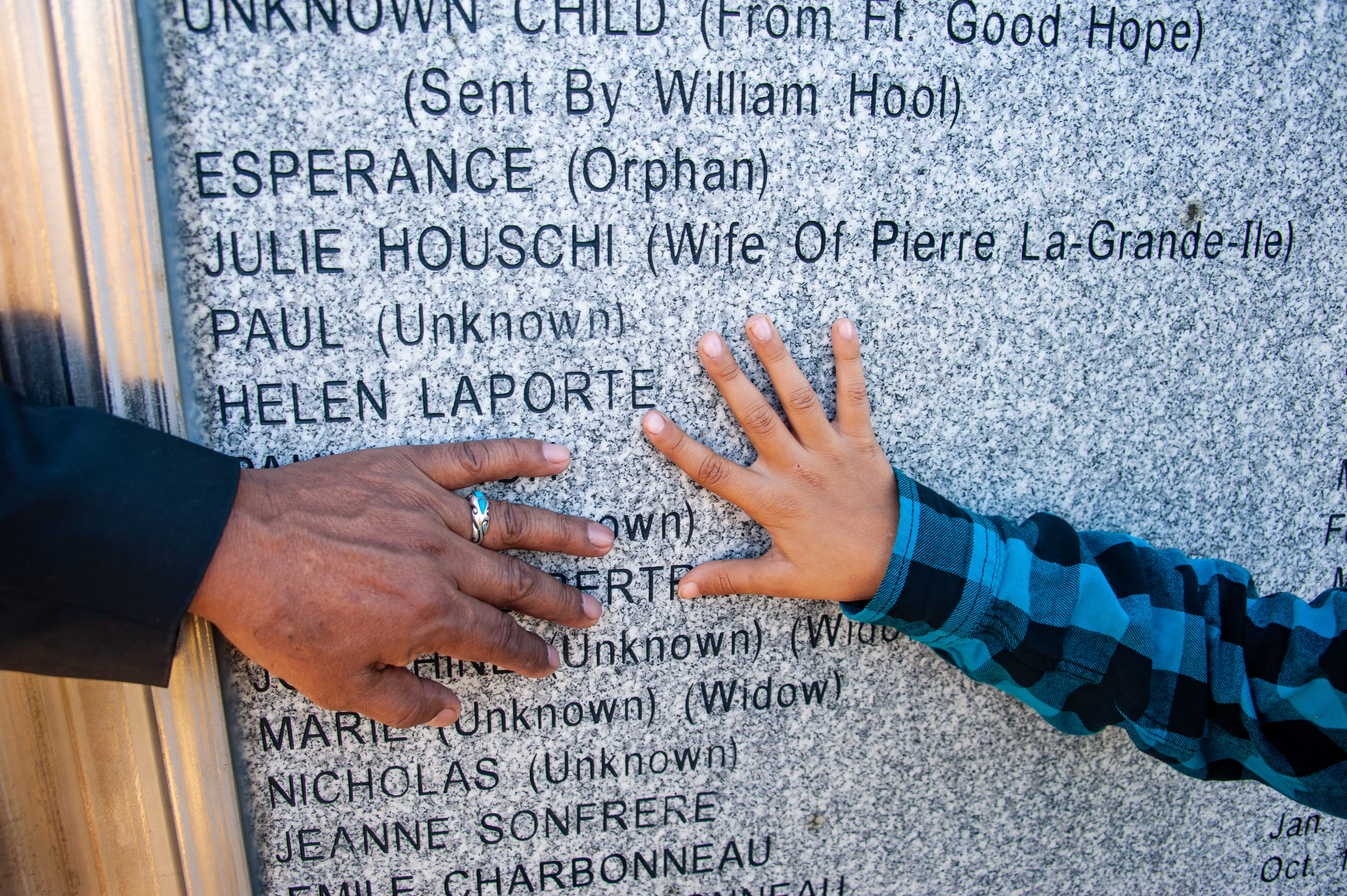
Stephen Kakfwi and grandson Ryden place their hands under Helen Laporte's engraved name.
Oct. 3, 2019.
“Helen Laporte.” “Charles Laporte.” “Georgina Laporte” — three names among the 300 etched into the aging face of a sprawling stone monument that rests in Fort Providence.
Each inscribing holds a child’s lost life — lost while attending Fort Providence’s Sacred Heart Mission School, a residential school where Kakfwi’s relatives on his mother’s side were sent to in the 1800s.
Beside dozens of names, “unknown” fills the space where their last name ought to be.
For years, Kakfwi had no idea his relatives, the Laportes, were buried there.
It wasn’t until Kakfwi began researching his past; tracing his genealogy; sewing together an uprooted lineage, that he made the realization.
That was over a decade ago.
Between those years, in visits to the monument and cemetery, Kakfwi quietly canvassed the children’s names; silently surveying the magnitude of the monument.
“I’ve been going there for quite a few years — trying to figure out a way to relate to those children buried there,” Kakfwi told News/North.
After organizing a larger, family-focused visit, arranging to fly his brother and sisters — scattered across the Sahtu — to the monument, Kakfwi, found a way.
Not only did Kakfwi and his family, including his wife and grandchildren, speak the names of the forgotten children, they brought them pieces of their past; givings from the land they grew up on.
“We brought them berries, dry meat — things they would have grown up on,” recounted Kakfwi.
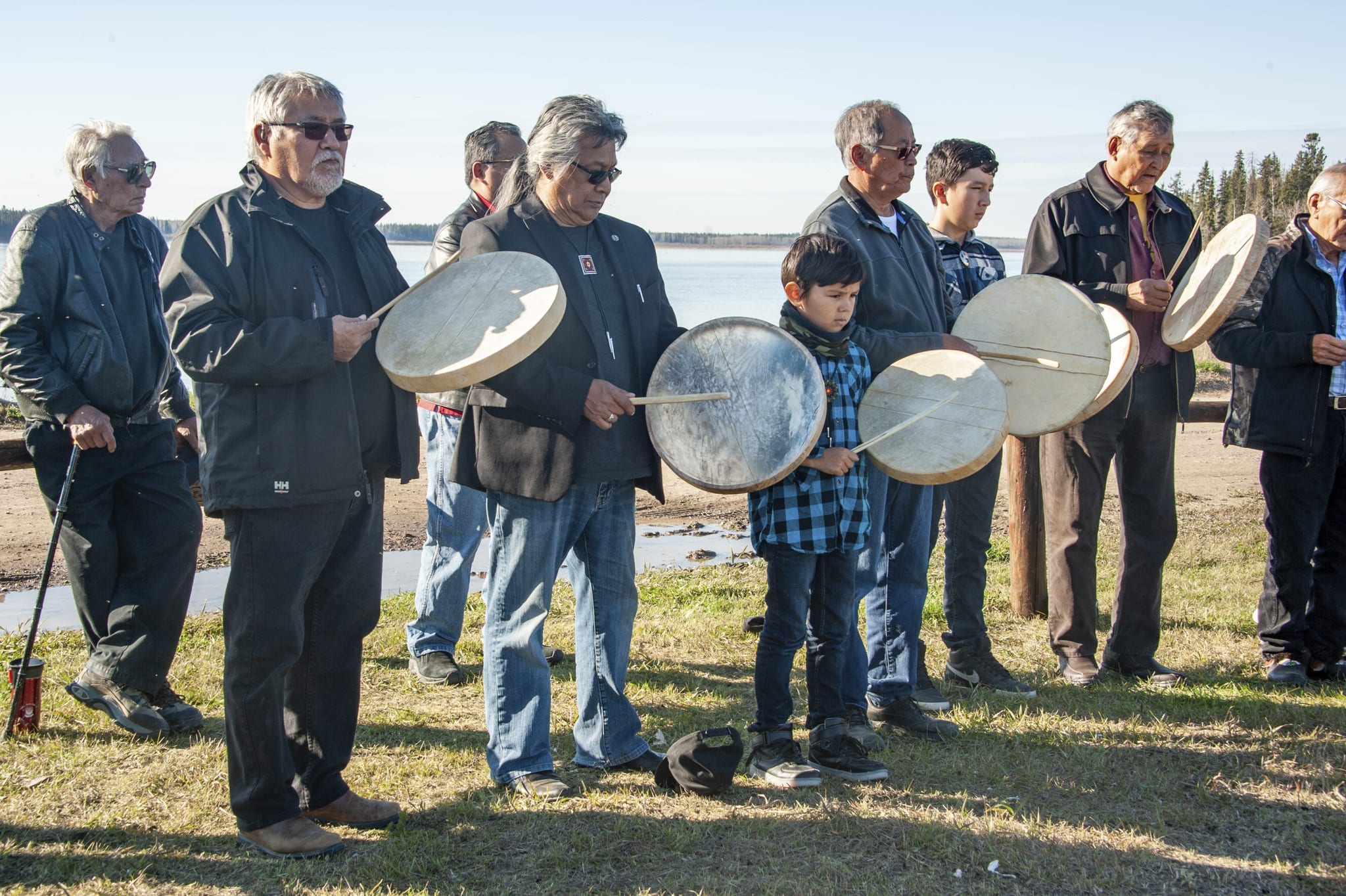
(From left) Paul Andrew, Stephen Kakfwi with his grandsons Ryden and Tydzeh, who flank former chief Jim Thom, and Michael Lafferty of Fort Good Hope.
Oct. 3, 2019.
A drumming and fire ceremony followed.
It was about bringing the children closer to home, after they were taken from it.
“They died alone in Fort Providence, probably afraid and wanting to be with their mothers and fathers,” said Kakfwi.
He knows what that’s like.
By 1960, most of Kakfwi’s family — his mother and father, aunts and uncles, sisters and brothers — had been taken to hospitals in Edmonton and Aklavik. Left with no one to look after him, Kakfwi, who grew up in Fort Good Hope, went to residential school in Inuvik at the age of nine.
He thought he’d been going on an “adventure.”
“I wasn’t afraid. I thought, ‘man, this is going to be so good. I’m going to see all my friends. We’re going to play just like we did back home in the summertime,’” remembered Kakfwi.
“I learned very quickly that it was not a good place.”
He was beaten by a nun on the first day, an act of cruelty and violence that foreshadowed a six-month stay marked by whippings and abuse.
Kakfwi was supposed to go back the following year, but his uncle, a riverboat pilot named Albert Lafferty, intervened. “He radioed in and demanded that I not be sent back. So, I was saved by my uncle,” said Kakfwi.
Kakfwi went on to become the premier of the Northwest Territories.
‘We know what it feels like’
“Myself, some of my brothers and sisters, we all went to residential school. So we know what it feels like to be little kids taken away and being far from our parents, being scared, being abused,” said Kakfwi, who now lives in Yellowknife.
That’s why visiting the monument is so important for Kakfwi.
“We’re honouring the children and claiming them back as members of our family,” he said.
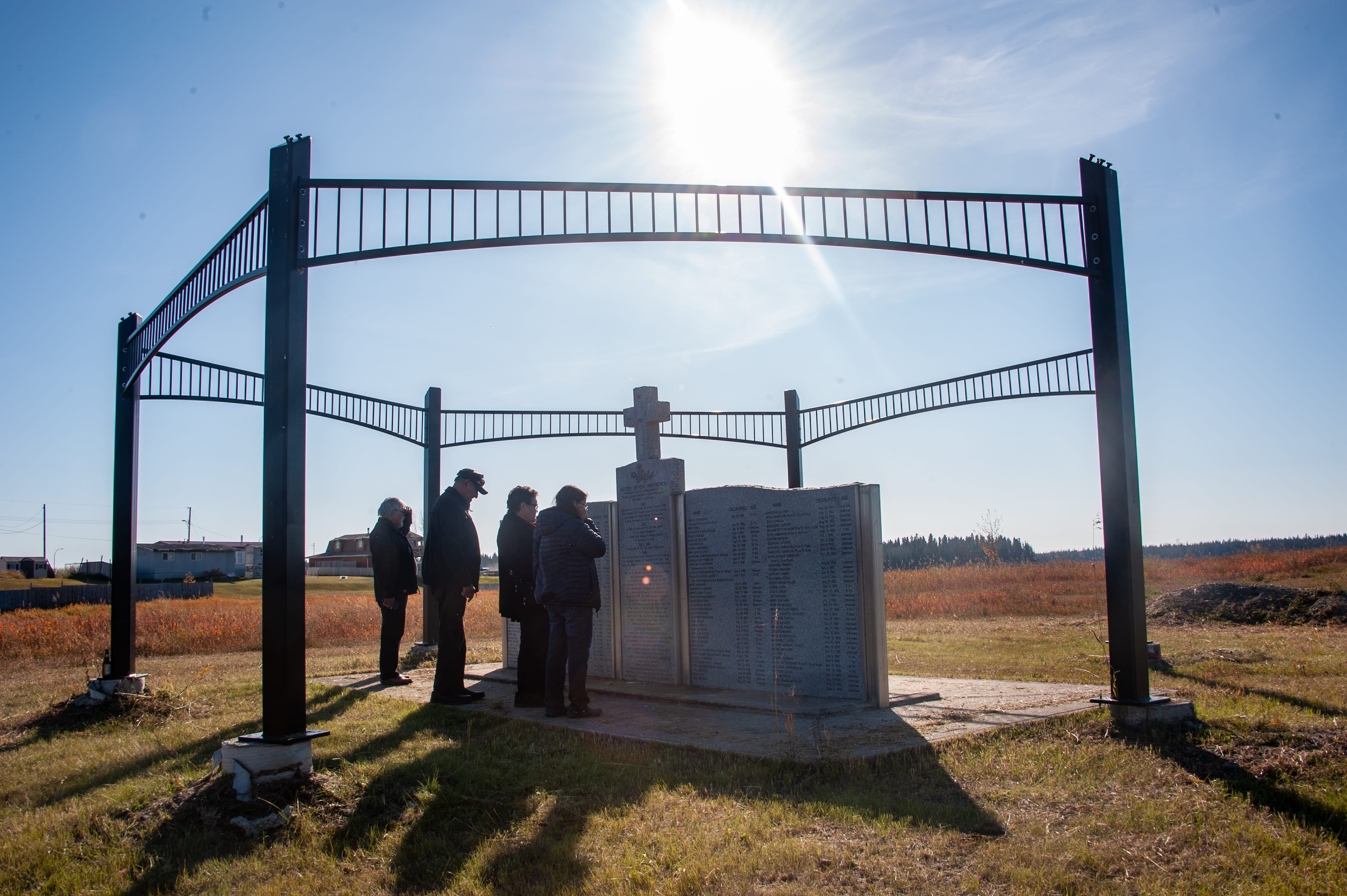
It was a sunny but sombre day at the monument site in Fort Providence.
Oct. 3, 2019.
“It’s a powerful experience.”
Plans to make visit a tradition
It’s also an experience Kakfwi hopes to expand on. The Oct. 3 visit and ceremony was birthed from a brainstorming session Kakfwi had in June at Turtle Lodge near Winnipeg.
Kakfwi outlined his wish to bring his family to the site in Fort Providence, and, in turn, the National Research Center for Reconciliation assisted by providing transportation costs for his family members.
Commissioner for the NWT, Margaret Thom — who accompanied Kakfwi at the recent ceremony — also played a role in putting the ceremony and visit together, he added.
“I think it may be the beginning of a tradition for people to go to Fort Providence and organize something annually with community leaders there to honour and visit the children.”
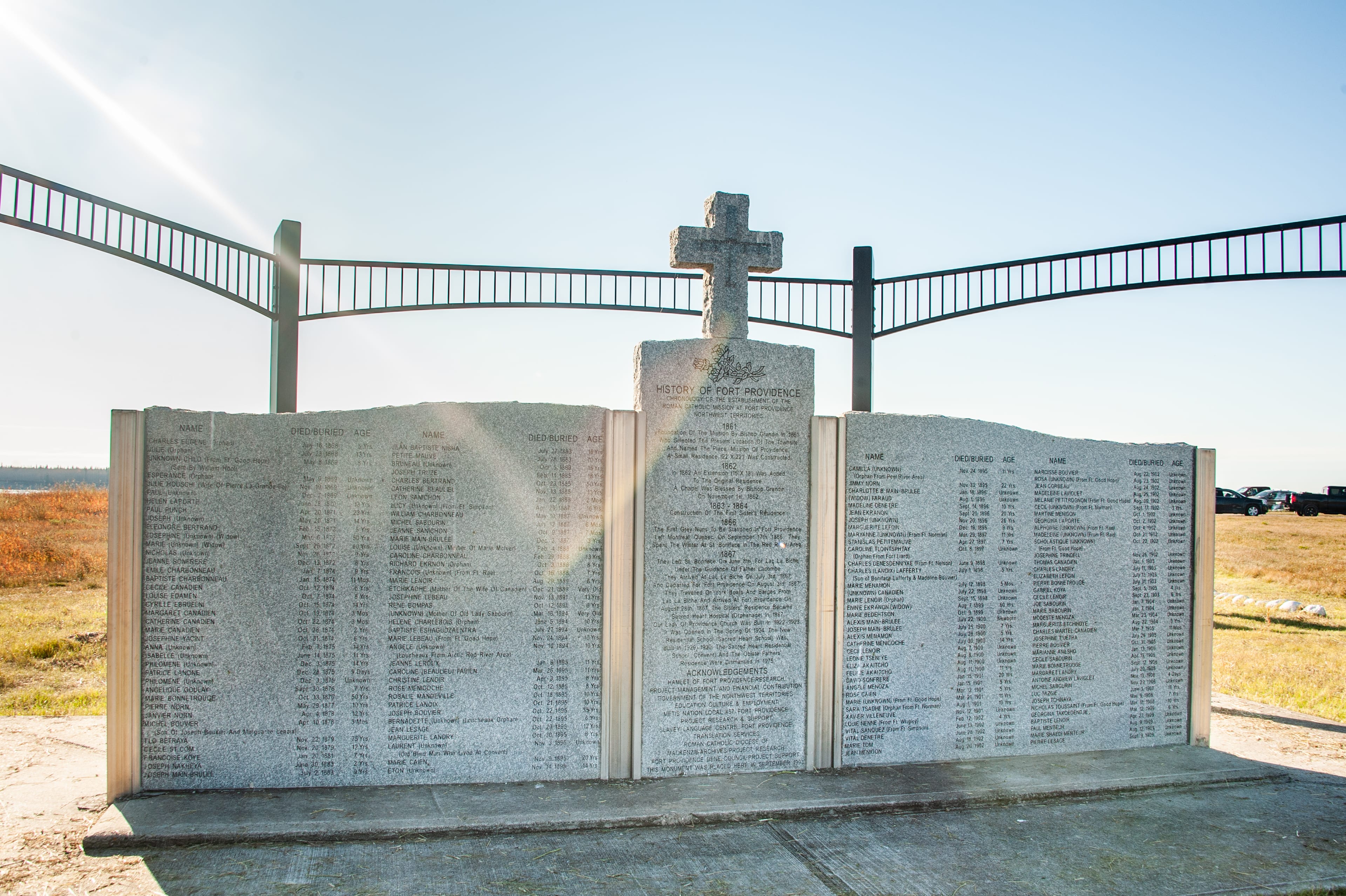
The monument displays the names of 300 who died at Fort Providence's Sacred Heart Mission school.
Oct. 3, 2019.
